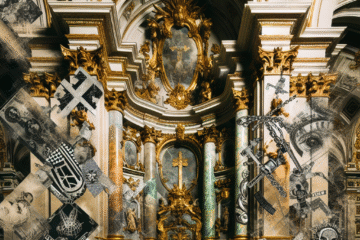
Image title: Hermann von Wedigh III (died 1560)
Medium: Oil and gold on oak
Date: 1532
Source:
The Met Collection
“
Pitching is the art of instilling fear.
”
— Sandy Koufax
Stitching Borders: The Radical Politics of Embroidered Protest Art
Introduction: Needles as Weapons of Resistance
Historically dismissed as a domestic pastime or women’s work, embroidery has often remained on the margins of high art discourse. Yet, across continents and decades, textile artists have wielded thread and fabric as incisive instruments of political resistance and historical memory. From the embroidered tapestries of Chilean arpilleristas during Pinochet’s dictatorship to the intricate tatreez of Palestinian artisans under occupation, embroidery has emerged as a form of visual protest that transcends borders and speaks powerfully through silence. This article traces the transformation of embroidery into a medium for activism, exploring how culture, technology, and gender politics have interwoven to empower the thread as a revolutionary tool.
1. The Roots of Resistance: Feminism, Folk Art, and the Embroidered Voice
Embroidery began its reemergence as a political medium during the feminist movements of the 20th century. Traditionally associated with passivity and domesticity, the act of stitching slowly became a site of subversion. Feminist artists in the 1970s, such as Judy Chicago with her monumental work “The Dinner Party,” recontextualized traditional crafts, asserting them as valid forms of feminist expression. This movement laid the groundwork for future generations to transform embroidery into a medium of radical commentary and visible protest.
2. Threads of Survival: The Arpilleristas of Chile
In the shadow of Augusto Pinochet’s dictatorship in Chile (1973–1990), women began crafting small pieces of protest cloth known as “arpilleras.” These embroidered scenes vividly depicted forced disappearances, poverty, and military repression—topics censored by the government-controlled media. The arpilleras functioned not only as a form of resistance but also as an economic necessity, often smuggled out and sold abroad. Through their tactile and colorful imagery, these works told stories that could not be spoken aloud, with women reclaiming narrative control amidst brutal suppression.
3. Tatreez and Tenacity: Palestinian Embroidery as Cultural Identity
For Palestinians, embroidery—referred to as “tatreez”—has long been a symbol of cultural heritage, traditionally passed down through generations of women. In recent decades, as displacement and occupation have intensified, tatreez has taken on a political dimension. Contemporary Palestinian artists like Malak Mattar and organizations such as the Women’s Affairs Technical Committee use embroidery to assert national identity and preserve collective history. Each stitch becomes a testament to resilience, transforming homespun art into a quiet yet forceful act of resistance to cultural erasure.
4. Digital Threads: The Technological Turn in Embroidered Activism
While embroidery is rooted in tradition, the digital age has radically expanded its reach and impact. Social media platforms have turned isolated stitching into global statements, allowing artists to share their pieces and connect with broader activist networks. Technologies like computerized embroidery machines also enable faster production of protest textiles—though many artists still choose hand stitching for its intimate, human touch. Projects like e-textiles and smart fabrics are beginning to merge coding with embroidery, hinting at a future where wearable protest speaks both figuratively and literally.
5. Borders Unraveled: Global Threads of Solidarity
From the Kalash communities in Pakistan to the Revolution Embroidery Circle in Iran, artists across the globe are reframing embroidery as a universal language of dissent. In the United States, movements like the “Tiny Pricks Project,” where contributors embroider quotes by political figures onto vintage linens, demonstrate that the medium has no geographical or ideological boundary. Each of these practices, while rooted in local struggle, tie together in a larger tapestry of global resistance—asserting that hands, when joined across borders and threads, can defy silence and build solidarity one stitch at a time.
Conclusion: Revolutionary Needlework and the Art of Remembering
Embroidered protest art challenges not only political regimes but also the hierarchies of art itself. It redefines whose voices deserve to be heard and which media can carry history’s weight. In the smallest stitch lies a record of defiance, love, and identity. As geopolitical tensions continue to escalate and censorship adapts to new technologies, embroidery remains an enduring and evolving medium—quiet, tactile, and profoundly radical.

Image description:
Mural embroidery, Udaipur, Rajasthan, India.
License:
CC BY-SA 4.0
Source:
Wikimedia Commons


